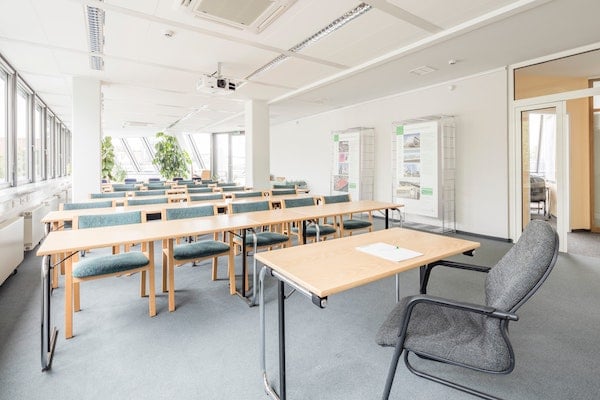Published on
Teaching in the Virtual Classroom: An Instructor’s Perspective

On March 11th, 2020, the World Health Organization declared the novel coronavirus a pandemic, and urged national leaders to take drastic action to slow the spread. A global shutdown began, resulting in hundreds of millions of people suddenly transitioning to working and learning from the safety of their homes. Post-secondary students were not exempt from this shift in modality; university and college students all over the world found themselves undertaking courses rapidly modified for an online format from the in-person delivery for which they were intended. Students and educators alike found themselves struggling to pivot mid-term and adapt to the sudden change in educational dynamic.
As educators, we rely on training, experience and our own defined pedagogy to dictate how we interact and communicate with our students, develop and present learning material and evaluate student and personal performance. There are rules and expectations that provide a foundation and structure for both learner and educator. So, what happens when this certainty is taken away in a matter of days–when classes are cancelled, libraries and common areas are closed, and one sees muted panic everywhere they turn? We adapt. We find new (and sometimes frustrating) ways to communicate and educate, and we focus on creating a sense of normalcy for students in what is fast evolving into a far-from-normal year.
This pivot is not an easy one; although we are fortunate to have vast amounts of technological resources that have allowed us to continue forward regardless of physical restriction, limitations and glitches often lead to time-consuming troubleshooting and frustration on both sides of the learning relationship. We developed new ways of presenting information to students through their computers, tablets and cell phones, and updated our lesson plans to incorporate only the material we are able to disseminate virtually (gone are the days of handouts and chalkboards). We used online proctoring services for examinations, or replaced them completely with projects, reports and essays. We added digital community building to our repertoire and found innovative ways to engage students in a virtual classroom. We research, implement, test, and go back to the drawing board a dozen times as we attempt to create a seamless transition with minimal impact for students.
But there is impact. No matter how much we try, we cannot compensate for the psychological and emotional stress students experience as they figure out how to learn in an alien environment. Nor can we eliminate the uncertainty and fear surrounding the pandemic and its impact on the economy. What we can do is make our new virtual learning environments a safe and, to some extent, familiar place–a place where the rules haven’t drastically changed and the expectations remain constant. The format may differ, but the guiding principles of successful education endure; we rely on them as we work through the obstacles that inevitably arise and that, just as inevitably, we overcome.
We see that community building, a cornerstone of successful post-secondary instruction, presents a unique challenge to educators in a fully online learning environment. Lack of engagement is common; students don’t necessarily feel the same responsibility to their classmates or experience the same connection to the material as they do through traditional delivery. Digital discussion forums lack the additional context inferred from facial expression and body language; the give-and-take of organic in-person communication is hampered when responses are delayed by hours or days. As educators, we are walking a mile in student’s shoes as we take an active role in discussions and conversation; reliance upon a formalized participation mark to drive engagement is simply not sufficient.
We develop a dozen ways to present the same material, as the diversity of student learning styles has never been more relevant and presents additional complexity. Students who would have otherwise chosen in-person classes find themselves forced into a modality they feel ill-equipped for. Although we can’t create a customized solution for each student, we design our delivery methods around a needs-based model. Incorporating live discussion groups, lectures and office hours brings students together, provides an opportunity for us to interact with our learners and, perhaps most importantly, connects students with the educational experience they feel was taken from them. We maximize technology, with all the frustration and trial and error necessary, to present material in a multitude of ways to ensure each student is able to make connections, draw inferences and actively participate in their learning.
We listen to our students, ask questions and integrate their responses into each step forward. We open the door to student engagement in their own education; now, more than ever, learners need to feel in control of their destination. We give them that control by surrendering some ourselves. Flexibility is the keyword for teaching in our pandemic-altered world; we move deadlines, modify lesson plans, and recreate expectations and objectives on the fly as our macroenvironment changes almost daily.
The role we play as educators has never been as important as it is today while we remain a constant in a world that is anything but. We support, cajole, and propel students forward. We reinforce their faith in themselves and the importance of adhering to the path they have chosen. When nothing is certain, and the entire world seems to be on hold, we remind students of the certainty that, one day, the world will start to turn again. Businesses will open, hands will be shaken, hugs will be exchanged, and their futures will come rushing to meet them. Most importantly, we reassure them that they will be ready. That the fear, frustration, and challenges will all be worth it. Because when the pandemic ends–and it will end–we will all be forever changed. As learners and educators, as workers and business owners, as friends and family and everyday people. And we will step into that future armed with the knowledge that we can withstand, overcome, and thrive.
Disclaimer: Embedded links in articles don’t represent author endorsement, but aim to provide readers with additional context and service.
Author Perspective: Educator



